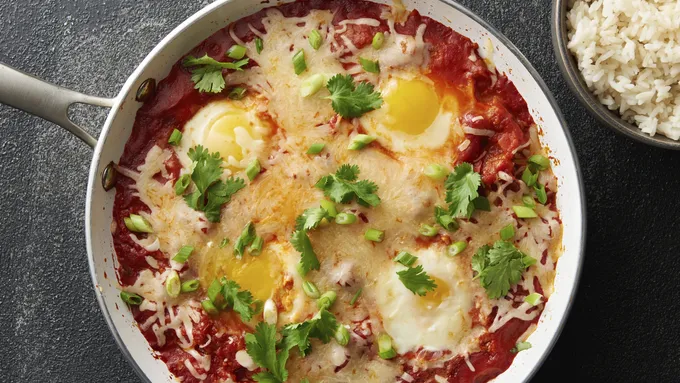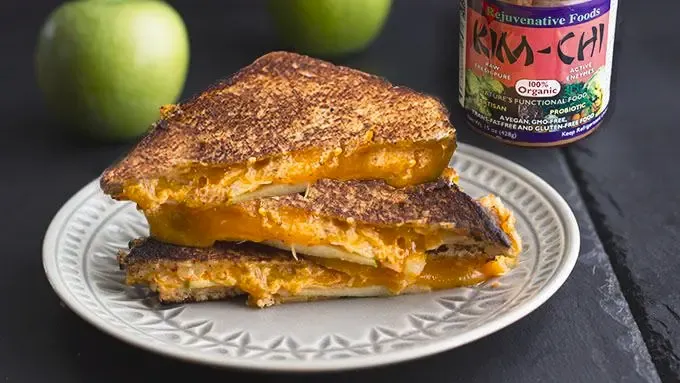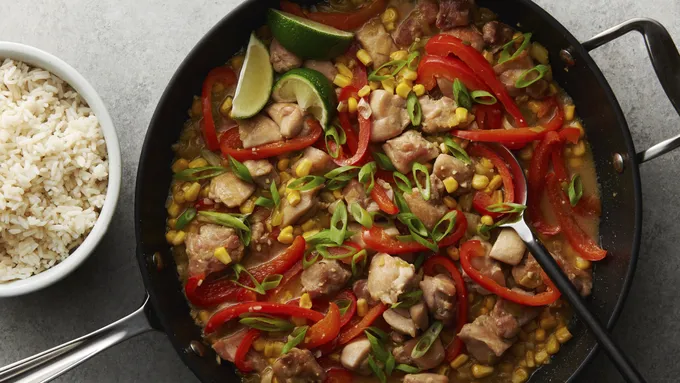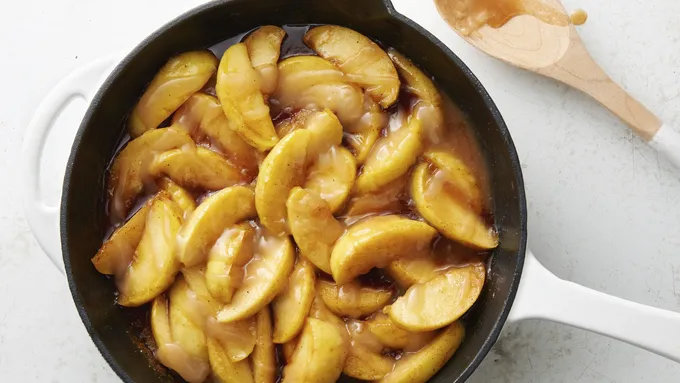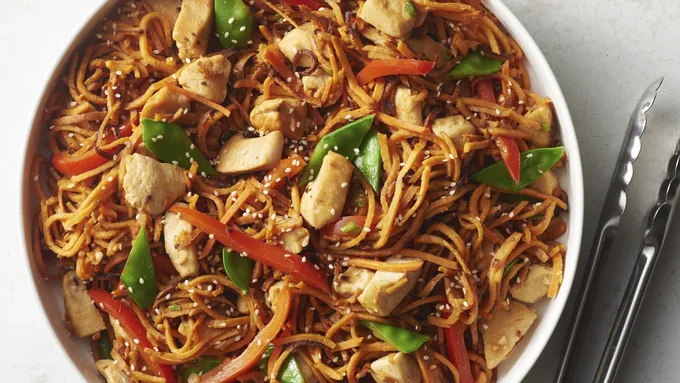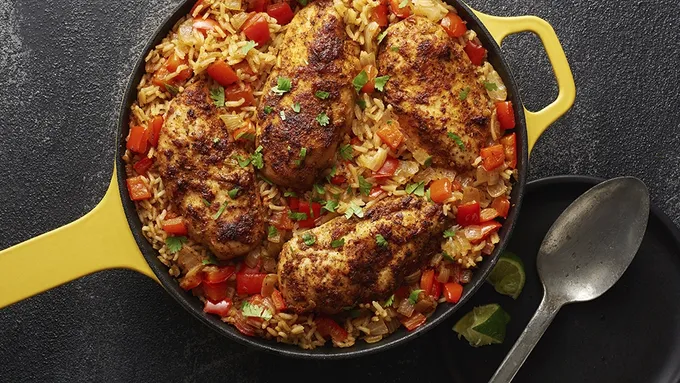(function() {
document.addEventListener('DOMContentLoaded', function() {
var componentMetadata = JSON.parse('\x7b\x22componentName\x22\x3a\x22ActionToolbar_54a65093-280d-4b2a-8a72-d13833164a15\x22,\x22deferOptions\x22\x3a\x7b\x22deferComponent\x22\x3afalse,\x22deferType\x22\x3a\x22None\x22,\x22deferId\x22\x3a\x22r08c49ead0b494949afc5f75a3594cd8c\x22,\x22deferredContainerId\x22\x3a\x22\x2fmain\x2frdpRecipeDetailToolbar\x22,\x22deferredContainerView\x22\x3anull\x7d,\x22viewName\x22\x3a\x22ActionToolbar\x22\x7d');
var configuration = {"contentId":"4e445fdd-0739-4635-a94f-a18046145e74","toolbarSettings":{"id":"54a65093-280d-4b2a-8a72-d13833164a15","registrationUrl":"/GMI/CoreSites/BC/Home/register/reg-fp","regAction":"FAVORITE","eSourceCode":11275,"namePassedToEvents":"RDPToolbar_LOWER","buttons":[{"addFavoriteErrorMessage":"Sorry, something went wrong. Please save again.","removeFavoriteErrorMessage":"Error occurred while removing from favorites","registrationUrl":"/GMI/CoreSites/BC/Home/register/reg-fp","regAction":"FAVORITE","eSourceCode":11275,"isCurrentUserAnonymous":false,"isFavoriteItem":false,"id":"718b4e01-b2be-40cf-8f0c-bca3b01db0ed","allowedForAnonymousUsers":false,"type":"Favorite","displayName":"Save","toggleDisplayName":"Saved","namePassedToEvents":"Favorite","cssClassName":"atButtonFavorite","privacyOptOutMessage":"\u003cdiv class=\u0027privacyMessage\u0027\u003e\n\u003ch3\u003eThis feature is not available with your current cookie settings.\u003c/h3\u003e\n\u003cp\u003eYou can \u003ca href=\u0027#\u0027 data-show-preference-center=\u00271\u0027\u003eupdate your privacy settings\u003c/a\u003e to enable this content. Please enable “Functional Cookies” to use this feature.\u003c/p\u003e\n\u003c/div\u003e","showPrivacyOptOutMessage":false},{"nestedButtons":[{"providerName":"pinterest","providerNamePassedToEvents":"Pinterest","shareUrlFormat":"//pinterest.com/pin/create/link/?url={0}","id":"585d4198-c691-4eae-bb63-66cc1927e44a","allowedForAnonymousUsers":true,"type":"Social","displayName":"Save To Pinterest","toggleDisplayName":"","namePassedToEvents":"Pinterest","cssClassName":"atButtonPinterest","privacyOptOutMessage":"\u003cdiv class=\u0027privacyMessage\u0027\u003e\n\u003ch3\u003eThis feature is not available with your current cookie settings.\u003c/h3\u003e\n\u003cp\u003eYou can \u003ca href=\u0027#\u0027 data-show-preference-center=\u00271\u0027\u003eupdate your privacy settings\u003c/a\u003e to enable this content. Please enable “Functional Cookies” to use this feature.\u003c/p\u003e\n\u003c/div\u003e","showPrivacyOptOutMessage":false},{"templateId":"95752b5c-7e75-4367-bca7-fdd3abb0ebcb","dialogHeading":"Email Recipe","emailCode":"TBSP_ContentEmail","dialogSettings":{"cancelButtonText":"Cancel","copyToSenderLabel":"Send a Copy to Myself","emailAddressesLabel":"* Email Address(es)","emailInstructionText":"Separate email addresses with commas","fromText":"From:","privacyPolicyText":"\u003cp\u003e\u0026copy;2025 General Mills, Inc. All Rights Reserved. This information will only be used to send an email to your friend(s) and will not be saved. Please read our \u003ca rel=\u0022noopener noreferrer\u0022 rel=\u0022noopener noreferrer\u0022 href=\u0022http://www.generalmills.com/company/privacy-policies/privacy-policy-us\u0022 target=\u0022_blank\u0022 shape=\u0022rect\u0022\u003ePrivacy Policy\u003c/a\u003e.\u003c/p\u003e","requiredFieldText":"* Required","sendButtonText":"Send","senderEmailAddressLabel":"* Your Email Address","senderFirstNameLabel":"* Your First Name","sendToText":"Send To:"},"id":"fad236f8-3084-4a50-bc7d-283bc5511677","allowedForAnonymousUsers":true,"type":"Email","displayName":"Share via Email","toggleDisplayName":"","namePassedToEvents":"Email","cssClassName":"atButtonEmail","privacyOptOutMessage":"\u003cdiv class=\u0027privacyMessage\u0027\u003e\n\u003ch3\u003eThis feature is not available with your current cookie settings.\u003c/h3\u003e\n\u003cp\u003eYou can \u003ca href=\u0027#\u0027 data-show-preference-center=\u00271\u0027\u003eupdate your privacy settings\u003c/a\u003e to enable this content. Please enable “Functional Cookies” to use this feature.\u003c/p\u003e\n\u003c/div\u003e","showPrivacyOptOutMessage":false},{"providerName":"facebook","providerNamePassedToEvents":"Facebook","shareUrlFormat":"//facebook.com/sharer/sharer.php?u={0}","id":"fc7a5260-abb4-42be-958a-d172ba87442b","allowedForAnonymousUsers":true,"type":"Social","displayName":"Share on Facebook","toggleDisplayName":"","namePassedToEvents":"Facebook","cssClassName":"atButtonFacebook","privacyOptOutMessage":"\u003cdiv class=\u0027privacyMessage\u0027\u003e\n\u003ch3\u003eThis feature is not available with your current cookie settings.\u003c/h3\u003e\n\u003cp\u003eYou can \u003ca href=\u0027#\u0027 data-show-preference-center=\u00271\u0027\u003eupdate your privacy settings\u003c/a\u003e to enable this content. Please enable “Functional Cookies” to use this feature.\u003c/p\u003e\n\u003c/div\u003e","showPrivacyOptOutMessage":false},{"successMessage":"Copied.","errorMessage":"Press Ctrl+C and Enter to copy to clipboard","successMessageDuration":3000,"errorMessageDuration":10000,"id":"263303a9-5fe6-480d-910a-608f153d379a","allowedForAnonymousUsers":true,"type":"CopyLink","displayName":"Copy Link","toggleDisplayName":"","namePassedToEvents":"Copy","cssClassName":"atButtonCopyLink","privacyOptOutMessage":"\u003cdiv class=\u0027privacyMessage\u0027\u003e\n\u003ch3\u003eThis feature is not available with your current cookie settings.\u003c/h3\u003e\n\u003cp\u003eYou can \u003ca href=\u0027#\u0027 data-show-preference-center=\u00271\u0027\u003eupdate your privacy settings\u003c/a\u003e to enable this content. Please enable “Functional Cookies” to use this feature.\u003c/p\u003e\n\u003c/div\u003e","showPrivacyOptOutMessage":false}],"id":"46a2d62f-b80c-49bf-969f-5d28640dc94a","allowedForAnonymousUsers":true,"type":"Reveal","displayName":"Share","toggleDisplayName":"","namePassedToEvents":"Share","cssClassName":"atButtonReveal","privacyOptOutMessage":"\u003cdiv class=\u0027privacyMessage\u0027\u003e\n\u003ch3\u003eThis feature is not available with your current cookie settings.\u003c/h3\u003e\n\u003cp\u003eYou can \u003ca href=\u0027#\u0027 data-show-preference-center=\u00271\u0027\u003eupdate your privacy settings\u003c/a\u003e to enable this content. Please enable “Functional Cookies” to use this feature.\u003c/p\u003e\n\u003c/div\u003e","showPrivacyOptOutMessage":false},{"layoutParameter":"p%3d1","id":"ab4bf4fc-919a-4252-81ca-c39edb8eadf0","allowedForAnonymousUsers":true,"type":"Print","displayName":"Print","toggleDisplayName":"","namePassedToEvents":"Print","cssClassName":"atButtonPrint","privacyOptOutMessage":"\u003cdiv class=\u0027privacyMessage\u0027\u003e\n\u003ch3\u003eThis feature is not available with your current cookie settings.\u003c/h3\u003e\n\u003cp\u003eYou can \u003ca href=\u0027#\u0027 data-show-preference-center=\u00271\u0027\u003eupdate your privacy settings\u003c/a\u003e to enable this content. Please enable “Functional Cookies” to use this feature.\u003c/p\u003e\n\u003c/div\u003e","showPrivacyOptOutMessage":false},{"errorMessage":"","id":"0a1bab6c-f930-4359-b8b4-a72470a4d8ee","allowedForAnonymousUsers":true,"type":"WakeLock","displayName":"Keep Screen On","toggleDisplayName":"","namePassedToEvents":"Wakelock","cssClassName":"","privacyOptOutMessage":"\u003cdiv class=\u0027privacyMessage\u0027\u003e\n\u003ch3\u003eThis feature is not available with your current cookie settings.\u003c/h3\u003e\n\u003cp\u003eYou can \u003ca href=\u0027#\u0027 data-show-preference-center=\u00271\u0027\u003eupdate your privacy settings\u003c/a\u003e to enable this content. Please enable “Functional Cookies” to use this feature.\u003c/p\u003e\n\u003c/div\u003e","showPrivacyOptOutMessage":false}],"isSticky":true},"userSettings":{"isCurrentUserAnonymous":true,"isFavoriteItem":false,"isAnonymousUserWithFavorites":false},"pageAttributes":{"url":"https%3a%2f%2fwww.tablespoon.com%2frecipes%2fone-skillet-bibimbap%2f4e445fdd-0739-4635-a94f-a18046145e74","contentId":"4e445fdd-0739-4635-a94f-a18046145e74"},"recaptchaPublicKey":"6LfW_icUAAAAAL_CG700pddUxLNYIxgRJe3vOg2Z"};
var moduleName = 'actionToolbar';
var isVueModule = true;
GeneralMills.PandoSites.RegisterControlInstance(moduleName, configuration, componentMetadata, isVueModule)
});
})();
Ingredients
Gochujang Mayonnaise
-
1/2
cup mayonnaise
-
1
tablespoon gochujang paste
-
1
tablespoon lime juice
Skillet
-
1
teaspoon vegetable oil
-
1
boneless rib eye steak (12 to 14 oz), trimmed of excess fat
-
2
tablespoons butter
-
1
cup thinly sliced kimchi, drained and patted dry
-
4
eggs
-
1
tablespoon soy sauce
-
4
cups hot cooked white rice
Vegetables
-
2
cups thinly sliced napa cabbage
-
1/2
cup thinly sliced cucumber
-
1/2
cup shredded carrots
-
1/4
cup thinly sliced radishes
-
1/4
cup chopped fresh cilantro leaves
-
4
green onions, thinly sliced on the bias (1/2 cup)
(function() {
document.addEventListener('DOMContentLoaded', function() {
var componentMetadata = JSON.parse('\x7b\x22componentName\x22\x3a\x22RecipeIngredients_a2352866-1a21-4a5d-9dd4-1744f7700fb5\x22,\x22deferOptions\x22\x3a\x7b\x22deferComponent\x22\x3afalse,\x22deferType\x22\x3a\x22None\x22,\x22deferId\x22\x3a\x22red0beee24b3943efb17bb21bf774076e\x22,\x22deferredContainerId\x22\x3a\x22\x2fmain\x2frdpIngredients\x22,\x22deferredContainerView\x22\x3anull\x7d,\x22viewName\x22\x3a\x22RecipeIngredients\x22\x7d');
var configuration = {};
var moduleName = 'recipeIngredients';
var isVueModule = false;
GeneralMills.PandoSites.RegisterControlInstance(moduleName, configuration, componentMetadata, isVueModule)
});
})();
(function() {
document.addEventListener('DOMContentLoaded', function() {
var componentMetadata = JSON.parse('\x7b\x22componentName\x22\x3a\x22DoubleClick_745c15b5-a9ad-4519-81b8-8ce6135efb93\x22,\x22deferOptions\x22\x3a\x7b\x22deferComponent\x22\x3atrue,\x22deferType\x22\x3a\x22OnDemand\x22,\x22deferId\x22\x3a\x22r5ace1963e2094d5980da2e68875c31e8\x22,\x22deferredContainerId\x22\x3a\x22\x2fmain\x2frdpSecondaryAd\x22,\x22deferredContainerView\x22\x3a\x22DoubleClick\x22\x7d,\x22viewName\x22\x3a\x22DoubleClick\x22\x7d');
var configuration = {"adId":"OMP/tablespoon/recipes/300x250_bottom","minPageWidth":"1000","maxPageWidth":"9999","defaultMinPageWidth":"1000","defaultMaxPageWidth":"9999","size":"[[300,600],[300,250]]","refreshWhenViewed":false,"adContainerId":"ab560aec-efeb-4b0f-a231-3b0ce19f92c5","doubleClickAdContainerId":"7b133e14-f348-4696-9c78-615ed270bb2a","adCaptionText":"Advertisement","networkCode":"/15704463/","relevantMetadata":[null,null],"privacyOptOut":false,"isThirdPartyProvider":true,"thirdPartyTag":"\u003cdiv align=\u0022center\u0022 data-freestar-ad=\u0022__300x600\u0022 id=\u0022a511fae683f6c4d4eaef9c33e31b18b6d\u0022 data-placement-name=\u0022tablespoon-com_right_rail_1\u0022\u003e\u003c/div\u003e","sovrnCssClass":"","responsive":true,"contentType":"Recipe","itemId":"4e445fdd-0739-4635-a94f-a18046145e74","continuesBelowText":"Recipe Continues Below"};
var moduleName = 'thirdPartyProvider';
var isVueModule = true;
GeneralMills.PandoSites.RegisterControlInstance(moduleName, configuration, componentMetadata, isVueModule)
});
})();
(function() {
document.addEventListener('DOMContentLoaded', function() {
var componentMetadata = JSON.parse('\x7b\x22componentName\x22\x3a\x22RecipeSteps_a2352866-1a21-4a5d-9dd4-1744f7700fb5\x22,\x22deferOptions\x22\x3a\x7b\x22deferComponent\x22\x3atrue,\x22deferType\x22\x3a\x22OnDemand\x22,\x22deferId\x22\x3a\x22r47feb35041644620bd91381fdfab6ee0\x22,\x22deferredContainerId\x22\x3a\x22\x2fmain\x2frdpSteps\x22,\x22deferredContainerView\x22\x3a\x22RecipeDetailRedesign\x22\x7d,\x22viewName\x22\x3a\x22RecipeSteps\x22\x7d');
var configuration = {"initAreImagesHidden":false,"hideImagesEventName":"HideStepShots","showImagesEventName":"ShowStepShots","hideImagesButtonText":"Hide Images","showImagesButtonText":"Show Images","hideImagesClass":"rdpHideStepImages"};
var moduleName = 'recipeStepShots';
var isVueModule = true;
GeneralMills.PandoSites.RegisterControlInstance(moduleName, configuration, componentMetadata, isVueModule)
});
})();
710
Calories
40g
Total Fat
33g
Protein
54g
Total Carbohydrate
5g
Sugars
Nutrition Facts
Serving Size:
1 Serving
- Calories
- 710
- Calories from Fat
- 360
- Total Fat
- 40g
- 61%
- Saturated Fat
- 11g
- 56%
- Trans Fat
- 1/2g
- Cholesterol
- 275mg
- 91%
- Sodium
- 1330mg
- 55%
- Potassium
- 610mg
- 18%
- Total Carbohydrate
- 54g
- 18%
- Dietary Fiber
- 2g
- 10%
- Sugars
- 5g
- Protein
- 33g
- Vitamin A
- 80%
- 80%
- Vitamin C
- 25%
- 25%
- Calcium
- 15%
- 15%
- Iron
- 30%
- 30%
Exchanges:
3 Starch; 0 Fruit; 0 Other Carbohydrate; 0 Skim Milk; 0 Low-Fat Milk; 0 Milk; 1 1/2 Vegetable; 0 Very Lean Meat; 2 Lean Meat; 0 High-Fat Meat; 5 1/2 Fat;
Carbohydrate Choice
3 1/2
*Percent Daily Values are based on a 2,000 calorie diet.
(function() {
document.addEventListener('DOMContentLoaded', function() {
var componentMetadata = JSON.parse('\x7b\x22componentName\x22\x3a\x22RecipeNutritionNonPrintRedesign_a2352866-1a21-4a5d-9dd4-1744f7700fb5\x22,\x22deferOptions\x22\x3a\x7b\x22deferComponent\x22\x3atrue,\x22deferType\x22\x3a\x22Simple\x22,\x22deferId\x22\x3a\x22r2e7d4836057f4cca85e97e62618b5e21\x22,\x22deferredContainerId\x22\x3a\x22\x2fmain\x2frdpNutrition\x22,\x22deferredContainerView\x22\x3a\x22RecipeDetailRedesign\x22\x7d,\x22viewName\x22\x3a\x22RecipeNutritionNonPrintRedesign\x22\x7d');
var configuration = {"initIsExpanded":false,"expandEventName":"NutritionExpand","collapseEventName":"NutritionCollapse"};
var moduleName = 'recipeNutrition';
var isVueModule = true;
GeneralMills.PandoSites.RegisterControlInstance(moduleName, configuration, componentMetadata, isVueModule)
});
})();
Expert Tips
{{tipItemHeadingFormat.replace('{0}',props.index + 1)}}
(function() {
document.addEventListener('DOMContentLoaded', function() {
var componentMetadata = JSON.parse('\x7b\x22componentName\x22\x3a\x22RecipeTipsCarousel_a2352866-1a21-4a5d-9dd4-1744f7700fb5\x22,\x22deferOptions\x22\x3a\x7b\x22deferComponent\x22\x3atrue,\x22deferType\x22\x3a\x22Simple\x22,\x22deferId\x22\x3a\x22r25bb6c5e61764ce1bc331d7b84e40892\x22,\x22deferredContainerId\x22\x3a\x22\x2fmain\x2frdpTips\x22,\x22deferredContainerView\x22\x3a\x22RecipeDetailRedesign\x22\x7d,\x22viewName\x22\x3a\x22RecipeTipsCarousel\x22\x7d');
var configuration = {"title":"One-Skillet Bibimbap","introduction":"Restaurant-style Korean food in your own kitchen? Oh yeah, we got that! While at first glance this meal might look complex, bibimbap is a totally home cook-friendly dish. Put down the takeout menu, grab one (yes, one!) skillet and get ready to head to flavor paradise.","servingSize":"1 Serving","image":{"small":{"media":"(min-width: 0px)","src":"https://mojo.generalmills.com/api/public/content/AyBxYu-mxUSuA1W_Az4zUA_webp_base.webp?v=745c25c3\u0026t=e724eca7b3c24a8aaa6e089ed9e611fd"},"medium":{"media":"(min-width: 500px)","src":"https://mojo.generalmills.com/api/public/content/AyBxYu-mxUSuA1W_Az4zUA_webp_base.webp?v=745c25c3\u0026t=191ddcab8d1c415fa10fa00a14351227"},"large":{"media":"(min-width: 767px)","src":"https://mojo.generalmills.com/api/public/content/AyBxYu-mxUSuA1W_Az4zUA_webp_base.webp?v=745c25c3\u0026t=191ddcab8d1c415fa10fa00a14351227"},"alt":"One-Skillet Bibimbap"},"contributor":{"label":"by:","name":"Tablespoon Kitchens","profileUrl":"/about-us","displayDate":{"label":"Updated","date":"Nov 15, 2019"}},"ingredientGroups":[{"name":"Gochujang Mayonnaise","ingredients":[{"quantity":"1/2","description":"cup mayonnaise"},{"quantity":"1","description":"tablespoon gochujang paste"},{"quantity":"1","description":"tablespoon lime juice"}]},{"name":"Skillet","ingredients":[{"quantity":"1","description":"teaspoon vegetable oil"},{"quantity":"1","description":"boneless rib eye steak (12 to 14 oz), trimmed of excess fat"},{"quantity":"2","description":"tablespoons butter"},{"quantity":"1","description":"cup thinly sliced kimchi, drained and patted dry"},{"quantity":"4","description":"eggs"},{"quantity":"1","description":"tablespoon soy sauce"},{"quantity":"4","description":"cups hot cooked white rice"}]},{"name":"Vegetables","ingredients":[{"quantity":"2","description":"cups thinly sliced napa cabbage"},{"quantity":"1/2","description":"cup thinly sliced cucumber"},{"quantity":"1/2","description":"cup shredded carrots"},{"quantity":"1/4","description":"cup thinly sliced radishes"},{"quantity":"1/4","description":"cup chopped fresh cilantro leaves"},{"quantity":"4","description":"green onions, thinly sliced on the bias (1/2 cup)"}]}],"steps":[{"description":"In small bowl, beat Gochujang Mayonnaise ingredients with whisk; set aside.","stepShotImageUrl":"//mojo.generalmills.com/api/public/content/REhk6xmpwkqiyh94salOCg_webp_base.webp?v=80d08b03\u0026t=3653fe2f5ecd4a47a5a51c97e429947c"},{"description":"In 10-inch nonstick skillet, heat oil over medium-high heat. Add steak; cook 4 to 6 minutes or until deep brown on first side. Turn steak; reduce heat to medium, and cook 4 to 6 minutes or until cooked to desired temperature (145°F for medium-rare). Transfer to cutting board; let stand 5 minutes, then thinly slice. Cover with foil to keep warm.","stepShotImageUrl":"//mojo.generalmills.com/api/public/content/FUhk9EJbTkG0D7sfu9PcPA_webp_base.webp?v=c963249a\u0026t=3653fe2f5ecd4a47a5a51c97e429947c"},{"description":"Add 1 tablespoon of the butter to drippings in skillet over medium heat. Add kimchi; cook 3 to 5 minutes or until browned on edges. Transfer to small bowl; cover with foil to keep warm.","stepShotImageUrl":"//mojo.generalmills.com/api/public/content/_Ow2wW8BOEyYSHKmgT4ZJg_webp_base.webp?v=9fd1d6b0\u0026t=3653fe2f5ecd4a47a5a51c97e429947c"},{"description":"Add remaining tablespoon butter to skillet; add eggs. Cook 15 to 30 seconds or until edges are set; pour soy sauce over eggs, and cover pan. Reduce heat to low; cook 1 to 3 minutes or until yolks are set and no longer runny.","stepShotImageUrl":"//mojo.generalmills.com/api/public/content/fAhC7TkyoEGMDnX7emPj_w_webp_base.webp?v=39ba2845\u0026t=3653fe2f5ecd4a47a5a51c97e429947c"},{"description":"Divide rice among 4 bowls. Divide vegetables evenly over rice. Top each bowl with one-fourth of the steak and 1 egg. Divide kimchi mixture evenly among bowls. Drizzle with gochujang mayonnaise."}],"tips":[{"title":"","description":"Rib eye can be finicky to prepare. Here’s a tip: To achieve a more even cook on your protein, opt for a thicker steak, around 1 inch thick.","category":"Techniques","tipShots":[]},{"title":"","description":"To make your bibimbap bowl extra fancy, julienne the radishes and cucumber to match the shredded carrot and cabbage.","category":"Presentation/Garnish","tipShots":[]},{"title":"","description":"New to bibimbap? This rice-based dish originates from Korea, and its definition is right there in the name: “Bibim” means mixing ingredients together, and “bap” means rice. Bibimbap starts with warm rice, then is tossed in sautéed vegetables, kimchi or gochujang and soy sauce. A protein such as beef or a fried egg usually tops this bowl, and everything gets stirred together right before serving.","category":"Editorial","tipShots":[]},{"title":"","description":"Bibimbap is often served in a hot bowl, then the toppings are stirred against the bowl to cook them slightly. We took this idea and cooked all our ingredients in one skillet instead.","category":"Editorial","tipShots":[]},{"title":"","description":"Kitchen Tested - 10/2019","category":"Kitchen Tested","tipShots":[]}],"kitchenTips":[{"title":"","description":"Rib eye can be finicky to prepare. Here’s a tip: To achieve a more even cook on your protein, opt for a thicker steak, around 1 inch thick.","category":"Techniques","tipShots":[]},{"title":"","description":"To make your bibimbap bowl extra fancy, julienne the radishes and cucumber to match the shredded carrot and cabbage.","category":"Presentation/Garnish","tipShots":[]}],"additionalContent":[],"faq":[],"tipCategories":[{"categoryName":"Editorial","heading":"More About This Recipe","cssClass":"recipePartStory","expandOnInit":false,"expandText":"More +","collapseText":"Less -","expandEventName":"","collapseEventName":"","image":"","tips":[{"title":"","description":"New to bibimbap? This rice-based dish originates from Korea, and its definition is right there in the name: “Bibim” means mixing ingredients together, and “bap” means rice. Bibimbap starts with warm rice, then is tossed in sautéed vegetables, kimchi or gochujang and soy sauce. A protein such as beef or a fried egg usually tops this bowl, and everything gets stirred together right before serving.","category":"Editorial","tipShots":[]},{"title":"","description":"Bibimbap is often served in a hot bowl, then the toppings are stirred against the bowl to cook them slightly. We took this idea and cooked all our ingredients in one skillet instead.","category":"Editorial","tipShots":[]}],"isExpandable":false},{"categoryName":"Kitchen Tested","heading":"More About This Recipe","cssClass":"recipePartStory","expandOnInit":false,"expandText":"More +","collapseText":"Less -","expandEventName":"","collapseEventName":"","image":"","tips":[{"title":"","description":"Kitchen Tested - 10/2019","category":"Kitchen Tested","tipShots":[]}],"isExpandable":false}],"nutritionInfo":{"configuration":{"showAsTable":false,"noNutritionInformationAvailableMessage":"No nutrition information available for this recipe","poweredByText":"\u003cp\u003eNutrition information for this recipe is estimated using a leading nutrition calculation application, but is an estimate only. Actual nutrition values will vary based on the exact ingredients or brands you may use.\u003c/p\u003e\n\u003ca href=\u0022http://developer.edamam.com\u0022\u003ePowered By \u003cimg src=\u0022-/media/ABEEFB1BF16C40AEB5775A3BE02315EA.ashx\u0022 alt=\u0022Edamam\u0022 /\u003e\u003c/a\u003e","nutritionChartTitle":"Nutrition Facts","nutritionInformationLabel":"Nutrition","servingSizeText":"Serving Size:","dailyValuesDisclaimer":"*Percent Daily Values are based on a 2,000 calorie diet.","percentDailyValueText":"% Daily Value","percentDailyValueFooterTitleText":"% Daily Value*:","exchangeInformationTitleText":"Exchanges:","nutritionFactsExpandText":"More Nutrition","nutritionFactsCollapseText":"Less Nutrition"},"facts":{"carbohydrateChoice":{"amountPercent":"","amountUnits":"3 1/2","title":"Carbohydrate Choice"},"vitaminA":{"amountPercent":"80%","amountUnits":"80%","title":"Vitamin A"},"vitaminC":{"amountPercent":"25%","amountUnits":"25%","title":"Vitamin C"},"calcium":{"amountPercent":"15%","amountUnits":"15%","title":"Calcium"},"iron":{"amountPercent":"30%","amountUnits":"30%","title":"Iron"},"protein":{"amountPercent":"","amountUnits":"33g","title":"Protein"},"dietaryFiber":{"amountPercent":"10%","amountUnits":"2g","title":"Dietary Fiber"},"sugars":{"amountPercent":"","amountUnits":"5g","title":"Sugars"},"totalCarbohydrate":{"amountPercent":"18%","amountUnits":"54g","title":"Total Carbohydrate"},"sodium":{"amountPercent":"55%","amountUnits":"1330mg","title":"Sodium"},"potassium":{"amountPercent":"18%","amountUnits":"610mg","title":"Potassium"},"cholesterol":{"amountPercent":"91%","amountUnits":"275mg","title":"Cholesterol"},"transFat":{"amountPercent":"","amountUnits":"1/2g","title":"Trans Fat"},"saturatedFat":{"amountPercent":"56%","amountUnits":"11g","title":"Saturated Fat"},"totalFat":{"amountPercent":"61%","amountUnits":"40g","title":"Total Fat"},"caloriesFromFat":{"amountPercent":"","amountUnits":"360","title":"Calories from Fat"},"calories":{"amountPercent":"","amountUnits":"710","title":"Calories"}},"servingSize":"1 Serving","exchangeInfo":"3 Starch; 0 Fruit; 0 Other Carbohydrate; 0 Skim Milk; 0 Low-Fat Milk; 0 Milk; 1 1/2 Vegetable; 0 Very Lean Meat; 2 Lean Meat; 0 High-Fat Meat; 5 1/2 Fat;","showPoweredBy":false,"showRecipeTotalTime":true,"showRecipePrepTime":true,"showCarbohydrateChoices":true},"trademarks":[],"labels":{"ingredientsHeader":"Ingredients","stepsHeader":"Instructions","stepsImageHideText":"Hide Images","stepsImageShowText":"Show Images","stepNumberText":"Step","faqHeader":"Frequently Asked Questions","tipsHeader":"Expert Tips","tipItemHeadingFormat":"tip {0}","postedBy":"by:","copyright":"© {yyyy} ®/TM General Mills All Rights Reserved","showDrawerText":"Show","hideDrawerText":"Hide","expandDescriptionText":"More +","collapseDescriptionText":"Less -","includeScrollIndicator":false},"primaryAttributes":[{"label":"Prep Time","values":[{"text":"40","label":"min"}]},{"label":"Total","values":[{"text":"40","label":"min"}]},{"label":"Servings","values":[{"text":"4"}]},{"label":"Ingredients","values":[{"text":"16"}]}],"secondaryAttributes":[],"badges":[{"badgeType":3,"badgeText":"","label":"Kitchen Tested","imageUrl":"/-/media/GMI/Core-Sites/TBSP/Images/Shared/RecipeParts/KitchenTested_TBSP1.jpg?sc_lang=en","linkUrl":"/about-us/kitchen-tested","metaDataTags":[],"showMemberInfo":false,"matchedMetadataId":"00000000-0000-0000-0000-000000000000"}],"backgroundImageUrl":"","breadcrumbs":{"links":[{"url":"/","label":"Home"},{"url":"/recipes","label":"Recipes"}],"currentPageName":"One-Skillet Bibimbap"}};
var moduleName = 'recipeTipsCarousel';
var isVueModule = true;
GeneralMills.PandoSites.RegisterControlInstance(moduleName, configuration, componentMetadata, isVueModule)
});
})();
(function() {
document.addEventListener('DOMContentLoaded', function() {
var componentMetadata = JSON.parse('\x7b\x22componentName\x22\x3a\x22DoubleClick_80e5634b-4b8b-4ab6-9d42-f87399323043\x22,\x22deferOptions\x22\x3a\x7b\x22deferComponent\x22\x3atrue,\x22deferType\x22\x3a\x22OnDemand\x22,\x22deferId\x22\x3a\x22r8ddc1a66cc8f4eb9a186a7969db76360\x22,\x22deferredContainerId\x22\x3a\x22\x2fmain\x2frdpSecondaryAdMobile\x22,\x22deferredContainerView\x22\x3a\x22DoubleClick\x22\x7d,\x22viewName\x22\x3a\x22DoubleClick\x22\x7d');
var configuration = {"adId":"OMP/m_tablespoon/recipes/300x250_bottom","minPageWidth":"299","maxPageWidth":"767","defaultMinPageWidth":"1000","defaultMaxPageWidth":"9999","size":"[[300,250], [300,600]]","refreshWhenViewed":false,"adContainerId":"bc4496f3-e696-4c9b-98ae-53d5baa605eb","doubleClickAdContainerId":"5e6846c8-271b-4e0b-a637-adb79ba6e15a","adCaptionText":"Advertisement","networkCode":"/15704463/","relevantMetadata":[null,null],"privacyOptOut":false,"isThirdPartyProvider":true,"thirdPartyTag":"\u003cdiv align=\u0022center\u0022 data-freestar-ad=\u0022__300x250 __336x280\u0022 id=\u0022a0fdf2e5f0c0348148dd413dad434f39f\u0022 data-placement-name=\u0022tablespoon-com_content_standard\u0022\u003e\u003c/div\u003e","sovrnCssClass":"","responsive":true,"contentType":"Recipe","itemId":"4e445fdd-0739-4635-a94f-a18046145e74","continuesBelowText":"Recipe Continues Below"};
var moduleName = 'thirdPartyProvider';
var isVueModule = true;
GeneralMills.PandoSites.RegisterControlInstance(moduleName, configuration, componentMetadata, isVueModule)
});
})();
(function() {
document.addEventListener('DOMContentLoaded', function() {
var componentMetadata = JSON.parse('\x7b\x22componentName\x22\x3a\x22RelatedContent_86838426-dd26-481a-9735-69435bca607d\x22,\x22deferOptions\x22\x3a\x7b\x22deferComponent\x22\x3afalse,\x22deferType\x22\x3a\x22None\x22,\x22deferId\x22\x3a\x22r4a89e07a403b4cf2a88948973cae6afd\x22,\x22deferredContainerId\x22\x3a\x22\x2fmain\x2frdpRelatedContent1_NonDeferred\x22,\x22deferredContainerView\x22\x3anull\x7d,\x22viewName\x22\x3a\x22RelatedContent\x22\x7d');
var configuration = {"dataSourceId":"86838426-dd26-481a-9735-69435bca607d","isCurrentUserAnonymous":true,"isAnonymousUserWithFavorites":false,"relatedContentList":{"contentId":"4e445fdd-0739-4635-a94f-a18046145e74","listSettings":{"pageSize":3,"startPage":1,"listType":1,"title":"Try These Next","useModalRegistration":false,"regAction":"","esrcCode":0,"favoriteButtonLabelFormat":"Add {0} to favorites","contentTypes":["Category"],"showImages":false,"imageSize":0,"showRatings":false,"allowFavoriting":false,"cssClassName":"relatedContentWithoutImages","favoriteButtonText":""},"items":[{"contentId":"f5d7ba6d-a251-4060-84b1-d4d41920dcdf","contentType":"Category","title":"Mexican Recipes, Dishes and Ideas from Tablespoon","isFavorite":false,"linkUrl":"/courses/dinner/world-cuisine/mexican","numberOfRatings":"0","averageRating":"0","averageRatingStars":"0","smallImageUrl":"https://rms-media-prod.generalmills.com/b3732bfd-f9d1-4ace-931e-8dcd7ffedc32.jpg","mediumImageUrl":"https://rms-media-prod.generalmills.com/34cb136a-d327-48df-ba07-867b90353b34.jpg"},{"contentId":"9e94a687-3219-44be-8763-f5e8259467d9","contentType":"Category","title":"Weeknight Dinner Ideas","isFavorite":false,"linkUrl":"/courses/dinner","numberOfRatings":"0","averageRating":"0","averageRatingStars":"0","smallImageUrl":"https://rms-media-prod.generalmills.com/1c9499b7-319d-4f00-a1d6-ff8cbce26c8d.jpg","mediumImageUrl":"https://rms-media-prod.generalmills.com/3fa6e0a8-5e26-4d5d-b1b8-a1b5ca51312a.jpg"},{"contentId":"56e3a7c4-2bcc-4849-b433-c8a4f3f855a7","contentType":"Category","title":"Martini Recipes, Dishes and Ideas from Tablespoon","isFavorite":false,"linkUrl":"/courses/drinks/cocktail/martini","numberOfRatings":"0","averageRating":"0","averageRatingStars":"0","smallImageUrl":"","mediumImageUrl":""}],"availableItems":[{"contentId":"f5d7ba6d-a251-4060-84b1-d4d41920dcdf","contentType":"Category","title":"Mexican Recipes, Dishes and Ideas from Tablespoon","isFavorite":false,"linkUrl":"/courses/dinner/world-cuisine/mexican","numberOfRatings":"0","averageRating":"0","averageRatingStars":"0","smallImageUrl":"https://rms-media-prod.generalmills.com/b3732bfd-f9d1-4ace-931e-8dcd7ffedc32.jpg","mediumImageUrl":"https://rms-media-prod.generalmills.com/34cb136a-d327-48df-ba07-867b90353b34.jpg"},{"contentId":"9e94a687-3219-44be-8763-f5e8259467d9","contentType":"Category","title":"Weeknight Dinner Ideas","isFavorite":false,"linkUrl":"/courses/dinner","numberOfRatings":"0","averageRating":"0","averageRatingStars":"0","smallImageUrl":"https://rms-media-prod.generalmills.com/1c9499b7-319d-4f00-a1d6-ff8cbce26c8d.jpg","mediumImageUrl":"https://rms-media-prod.generalmills.com/3fa6e0a8-5e26-4d5d-b1b8-a1b5ca51312a.jpg"},{"contentId":"56e3a7c4-2bcc-4849-b433-c8a4f3f855a7","contentType":"Category","title":"Martini Recipes, Dishes and Ideas from Tablespoon","isFavorite":false,"linkUrl":"/courses/drinks/cocktail/martini","numberOfRatings":"0","averageRating":"0","averageRatingStars":"0","smallImageUrl":"","mediumImageUrl":""}]}};
var moduleName = 'relatedContent';
var isVueModule = true;
GeneralMills.PandoSites.RegisterControlInstance(moduleName, configuration, componentMetadata, isVueModule)
});
})();
(function() {
document.addEventListener('DOMContentLoaded', function() {
var componentMetadata = JSON.parse('\x7b\x22componentName\x22\x3a\x22RelatedContent_9930dad2-817c-4363-b508-21f459b3c521\x22,\x22deferOptions\x22\x3a\x7b\x22deferComponent\x22\x3atrue,\x22deferType\x22\x3a\x22OnDemand\x22,\x22deferId\x22\x3a\x22r6d48a67900e446ecb002a021045fe142\x22,\x22deferredContainerId\x22\x3a\x22\x2fmain\x2frdpRelatedContent1\x22,\x22deferredContainerView\x22\x3a\x22RecipeDetailRedesign\x22\x7d,\x22viewName\x22\x3a\x22RelatedContent\x22\x7d');
var configuration = {"dataSourceId":"9930dad2-817c-4363-b508-21f459b3c521","isCurrentUserAnonymous":true,"isAnonymousUserWithFavorites":false,"relatedContentList":{"contentId":"4e445fdd-0739-4635-a94f-a18046145e74","listSettings":{"pageSize":6,"startPage":1,"listType":1,"title":"","useModalRegistration":false,"regAction":"","esrcCode":0,"favoriteButtonLabelFormat":"Add {0} to favorites","contentTypes":[],"showImages":true,"imageSize":1,"showRatings":false,"allowFavoriting":true,"cssClassName":"","favoriteButtonText":"Save"},"items":[{"contentId":"dc1f2aca-b3d2-4688-94d5-7f619d0b0f6f","contentType":"Recipe","title":"Korean Shakshuka","isFavorite":false,"linkUrl":"/recipes/korean-shakshuka/dc1f2aca-b3d2-4688-94d5-7f619d0b0f6f","numberOfRatings":"0","averageRating":"0","averageRatingStars":"0","smallImageUrl":"//mojo.generalmills.com/api/public/content/YPcufZSUN0a5QE_BBlevug_webp_base.webp?v=ddc5b492\u0026t=67e847e026fb43aa8d6e3f5ef39a4ef7","mediumImageUrl":"//mojo.generalmills.com/api/public/content/YPcufZSUN0a5QE_BBlevug_webp_base.webp?v=ddc5b492\u0026t=3653fe2f5ecd4a47a5a51c97e429947c"},{"contentId":"4927646c-9026-438c-8bf7-c6c880df33f0","contentType":"Recipe","title":"Kimcheese Sandwich","isFavorite":false,"linkUrl":"/recipes/kimcheese-sandwich/4927646c-9026-438c-8bf7-c6c880df33f0","numberOfRatings":"0","averageRating":"0","averageRatingStars":"0","smallImageUrl":"//mojo.generalmills.com/api/public/content/yBcLMvQOj0uygwBOETBP5w_webp_base.webp?v=0defa953\u0026t=67e847e026fb43aa8d6e3f5ef39a4ef7","mediumImageUrl":"//mojo.generalmills.com/api/public/content/yBcLMvQOj0uygwBOETBP5w_webp_base.webp?v=0defa953\u0026t=3653fe2f5ecd4a47a5a51c97e429947c"},{"contentId":"26ce983b-11b6-494d-8c75-3d27699b1548","contentType":"Recipe","title":"Skillet Coconut Miso Chicken with Peppers and Corn","isFavorite":false,"linkUrl":"/recipes/skillet-coconut-miso-chicken-with-peppers-and-corn/26ce983b-11b6-494d-8c75-3d27699b1548","numberOfRatings":"0","averageRating":"0","averageRatingStars":"0","smallImageUrl":"//mojo.generalmills.com/api/public/content/AfS9tWKT6keb9odh7MmCqw_webp_base.webp?v=fd472240\u0026t=67e847e026fb43aa8d6e3f5ef39a4ef7","mediumImageUrl":"//mojo.generalmills.com/api/public/content/AfS9tWKT6keb9odh7MmCqw_webp_base.webp?v=fd472240\u0026t=3653fe2f5ecd4a47a5a51c97e429947c"},{"contentId":"c531c885-d0b2-4212-9ad7-1cd69fb8a36f","contentType":"Recipe","title":"Copycat Cracker Barrel™ Fried Apples","isFavorite":false,"linkUrl":"/recipes/copycat-cracker-barrel-fried-apples/c531c885-d0b2-4212-9ad7-1cd69fb8a36f","numberOfRatings":"0","averageRating":"0","averageRatingStars":"0","smallImageUrl":"//mojo.generalmills.com/api/public/content/urobgqRSd0GXQU0BQg5NwQ_webp_base.webp?v=d2b694bb\u0026t=67e847e026fb43aa8d6e3f5ef39a4ef7","mediumImageUrl":"//mojo.generalmills.com/api/public/content/urobgqRSd0GXQU0BQg5NwQ_webp_base.webp?v=d2b694bb\u0026t=3653fe2f5ecd4a47a5a51c97e429947c"},{"contentId":"0e34daa7-c375-4dd9-a85f-668d6fdd0be7","contentType":"Recipe","title":"Sweet Potato Noodle-Chicken Lo Mein","isFavorite":false,"linkUrl":"/recipes/sweet-potato-noodle-chicken-lo-mein/0e34daa7-c375-4dd9-a85f-668d6fdd0be7","numberOfRatings":"0","averageRating":"0","averageRatingStars":"0","smallImageUrl":"//mojo.generalmills.com/api/public/content/GuTWKWagu0yDvso9nsFfNw_webp_base.webp?v=d9ebbfd9\u0026t=67e847e026fb43aa8d6e3f5ef39a4ef7","mediumImageUrl":"//mojo.generalmills.com/api/public/content/GuTWKWagu0yDvso9nsFfNw_webp_base.webp?v=d9ebbfd9\u0026t=3653fe2f5ecd4a47a5a51c97e429947c"},{"contentId":"eda0017c-42a8-404b-bc47-22eebcd0586c","contentType":"Recipe","title":"Mexican Chicken and Rice Skillet","isFavorite":false,"linkUrl":"/recipes/mexican-chicken-and-rice-skillet/eda0017c-42a8-404b-bc47-22eebcd0586c","numberOfRatings":"0","averageRating":"0","averageRatingStars":"0","smallImageUrl":"//mojo.generalmills.com/api/public/content/SvnvETUPM0O3fLYfPjkkrA_webp_base.webp?v=795c60a8\u0026t=67e847e026fb43aa8d6e3f5ef39a4ef7","mediumImageUrl":"//mojo.generalmills.com/api/public/content/SvnvETUPM0O3fLYfPjkkrA_webp_base.webp?v=795c60a8\u0026t=3653fe2f5ecd4a47a5a51c97e429947c"}],"availableItems":[{"contentId":"dc1f2aca-b3d2-4688-94d5-7f619d0b0f6f","contentType":"Recipe","title":"Korean Shakshuka","isFavorite":false,"linkUrl":"/recipes/korean-shakshuka/dc1f2aca-b3d2-4688-94d5-7f619d0b0f6f","numberOfRatings":"0","averageRating":"0","averageRatingStars":"0","smallImageUrl":"//mojo.generalmills.com/api/public/content/YPcufZSUN0a5QE_BBlevug_webp_base.webp?v=ddc5b492\u0026t=67e847e026fb43aa8d6e3f5ef39a4ef7","mediumImageUrl":"//mojo.generalmills.com/api/public/content/YPcufZSUN0a5QE_BBlevug_webp_base.webp?v=ddc5b492\u0026t=3653fe2f5ecd4a47a5a51c97e429947c"},{"contentId":"4927646c-9026-438c-8bf7-c6c880df33f0","contentType":"Recipe","title":"Kimcheese Sandwich","isFavorite":false,"linkUrl":"/recipes/kimcheese-sandwich/4927646c-9026-438c-8bf7-c6c880df33f0","numberOfRatings":"0","averageRating":"0","averageRatingStars":"0","smallImageUrl":"//mojo.generalmills.com/api/public/content/yBcLMvQOj0uygwBOETBP5w_webp_base.webp?v=0defa953\u0026t=67e847e026fb43aa8d6e3f5ef39a4ef7","mediumImageUrl":"//mojo.generalmills.com/api/public/content/yBcLMvQOj0uygwBOETBP5w_webp_base.webp?v=0defa953\u0026t=3653fe2f5ecd4a47a5a51c97e429947c"},{"contentId":"26ce983b-11b6-494d-8c75-3d27699b1548","contentType":"Recipe","title":"Skillet Coconut Miso Chicken with Peppers and Corn","isFavorite":false,"linkUrl":"/recipes/skillet-coconut-miso-chicken-with-peppers-and-corn/26ce983b-11b6-494d-8c75-3d27699b1548","numberOfRatings":"0","averageRating":"0","averageRatingStars":"0","smallImageUrl":"//mojo.generalmills.com/api/public/content/AfS9tWKT6keb9odh7MmCqw_webp_base.webp?v=fd472240\u0026t=67e847e026fb43aa8d6e3f5ef39a4ef7","mediumImageUrl":"//mojo.generalmills.com/api/public/content/AfS9tWKT6keb9odh7MmCqw_webp_base.webp?v=fd472240\u0026t=3653fe2f5ecd4a47a5a51c97e429947c"},{"contentId":"c531c885-d0b2-4212-9ad7-1cd69fb8a36f","contentType":"Recipe","title":"Copycat Cracker Barrel™ Fried Apples","isFavorite":false,"linkUrl":"/recipes/copycat-cracker-barrel-fried-apples/c531c885-d0b2-4212-9ad7-1cd69fb8a36f","numberOfRatings":"0","averageRating":"0","averageRatingStars":"0","smallImageUrl":"//mojo.generalmills.com/api/public/content/urobgqRSd0GXQU0BQg5NwQ_webp_base.webp?v=d2b694bb\u0026t=67e847e026fb43aa8d6e3f5ef39a4ef7","mediumImageUrl":"//mojo.generalmills.com/api/public/content/urobgqRSd0GXQU0BQg5NwQ_webp_base.webp?v=d2b694bb\u0026t=3653fe2f5ecd4a47a5a51c97e429947c"},{"contentId":"0e34daa7-c375-4dd9-a85f-668d6fdd0be7","contentType":"Recipe","title":"Sweet Potato Noodle-Chicken Lo Mein","isFavorite":false,"linkUrl":"/recipes/sweet-potato-noodle-chicken-lo-mein/0e34daa7-c375-4dd9-a85f-668d6fdd0be7","numberOfRatings":"0","averageRating":"0","averageRatingStars":"0","smallImageUrl":"//mojo.generalmills.com/api/public/content/GuTWKWagu0yDvso9nsFfNw_webp_base.webp?v=d9ebbfd9\u0026t=67e847e026fb43aa8d6e3f5ef39a4ef7","mediumImageUrl":"//mojo.generalmills.com/api/public/content/GuTWKWagu0yDvso9nsFfNw_webp_base.webp?v=d9ebbfd9\u0026t=3653fe2f5ecd4a47a5a51c97e429947c"},{"contentId":"eda0017c-42a8-404b-bc47-22eebcd0586c","contentType":"Recipe","title":"Mexican Chicken and Rice Skillet","isFavorite":false,"linkUrl":"/recipes/mexican-chicken-and-rice-skillet/eda0017c-42a8-404b-bc47-22eebcd0586c","numberOfRatings":"0","averageRating":"0","averageRatingStars":"0","smallImageUrl":"//mojo.generalmills.com/api/public/content/SvnvETUPM0O3fLYfPjkkrA_webp_base.webp?v=795c60a8\u0026t=67e847e026fb43aa8d6e3f5ef39a4ef7","mediumImageUrl":"//mojo.generalmills.com/api/public/content/SvnvETUPM0O3fLYfPjkkrA_webp_base.webp?v=795c60a8\u0026t=3653fe2f5ecd4a47a5a51c97e429947c"}]}};
var moduleName = 'relatedContent';
var isVueModule = true;
GeneralMills.PandoSites.RegisterControlInstance(moduleName, configuration, componentMetadata, isVueModule)
});
})();
© 2025 ®/TM General Mills All Rights Reserved
(function() {
document.addEventListener('DOMContentLoaded', function() {
var componentMetadata = JSON.parse('\x7b\x22componentName\x22\x3a\x22DoubleClick_34589d2e-66d8-4e9a-9c4f-fb0e3ab39458\x22,\x22deferOptions\x22\x3a\x7b\x22deferComponent\x22\x3atrue,\x22deferType\x22\x3a\x22OnDemand\x22,\x22deferId\x22\x3a\x22rf58feaefef7146d6a2dcd9e882555bbe\x22,\x22deferredContainerId\x22\x3a\x22\x2fmain\x2frdpTernaryAd\x22,\x22deferredContainerView\x22\x3a\x22DoubleClick\x22\x7d,\x22viewName\x22\x3a\x22DoubleClick\x22\x7d');
var configuration = {"adId":"OMP/tablespoon/recipes/300x250_bottom2","minPageWidth":"1000","maxPageWidth":"9999","defaultMinPageWidth":"1000","defaultMaxPageWidth":"9999","size":"[[300,600],[300,250]]","refreshWhenViewed":false,"adContainerId":"34857de7-ca79-46b5-9b3b-fab06df3ae1b","doubleClickAdContainerId":"4305d4c2-739c-4aed-8ae9-ffd995eb28db","adCaptionText":"Advertisement","networkCode":"/15704463/","relevantMetadata":[null,null],"privacyOptOut":false,"isThirdPartyProvider":true,"thirdPartyTag":"\u003cdiv align=\u0022center\u0022 data-freestar-ad=\u0022__300x600\u0022 id=\u0022a2e3a5d2d84b547688a8f339294828482\u0022 data-placement-name=\u0022tablespoon-com_right_rail_1\u0022\u003e\u003c/div\u003e","sovrnCssClass":"","responsive":true,"contentType":"Recipe","itemId":"4e445fdd-0739-4635-a94f-a18046145e74","continuesBelowText":"Recipe Continues Below"};
var moduleName = 'thirdPartyProvider';
var isVueModule = true;
GeneralMills.PandoSites.RegisterControlInstance(moduleName, configuration, componentMetadata, isVueModule)
});
})();
![]()
![]()
![]()
![]()






